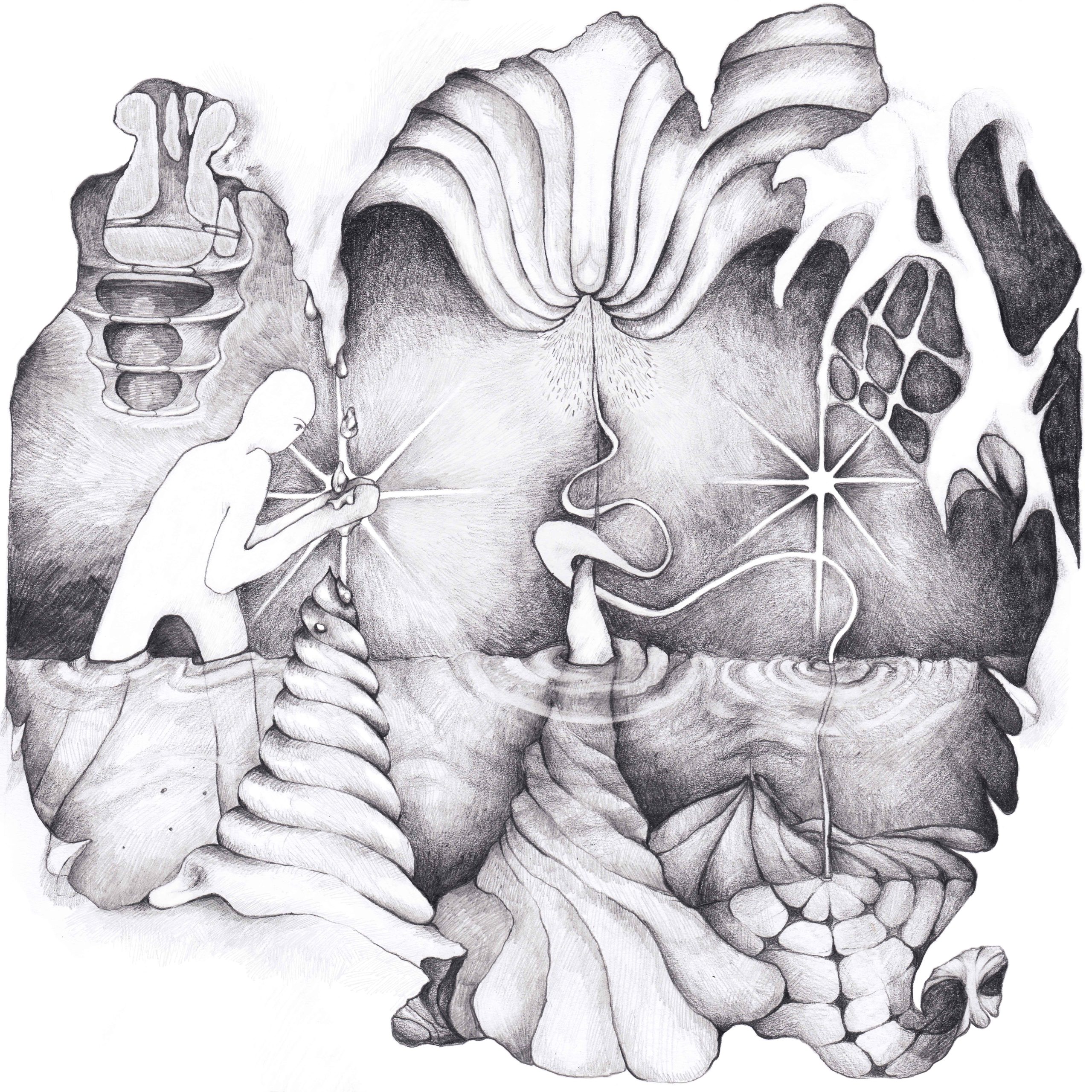the girliness of the wasteland, the maddening mäda
curling around our
fingers and vocal folds folding into us
...writes young Estonian poet Vaim Sarv, sounding like an opening rhyme to the latest issue of A Shade Colder, Whispers in the Landscape.

The last issue for 2022 is published in late November, a few weeks after many people in the world celebrate their adaptations of the Day of the Dead. In Estonian mythology, the months of October and November have been known as the time of the souls when the spirits of dead relatives would come to visit the families they once had. Nowadays, the pagan tradition has modestly shrunk to just lighting up a candle on the window, so the dead can find their way. However, the time of the souls still marks the beginning of the darkest and coldest time of the year. It is a grim reminder that the natural conditions in which we live have more power over us than maybe we would like to acknowledge. The mild whispers in the landscape are moulding the culture, the subconsciousness and the identity of the people that inhabit the land.
This is even more apparent in the growing energy crisis, which threatens to or already has left us in an even deeper darkness this winter. In her article, Eglė Rindzevičiūtė draws attention to the shared experience of the vulnerability and instability of the technological infrastructure in the region, from the Baltics to Ukraine, where the fragility of the once progress-oriented power networks and transport infrastructure has become awfully apparent after Russia’s invasion in February.
On another note, Natalia Sielewicz and Alison M. Gingeras summarise the Eastern European understanding of nature and landscape, where mythical sirens, small devils, spirited animals and skeletons wander the magical forests and demonic marshes. They offer a revisionist reading of Symbolist art from Poland, Ukraine, the Czech Republic, and the Baltic states, where artists have engaged with specific regional landscapes and common mythologies.
Vaida Stepanovaite writes about artists Sandra Kosorotova, Marija Nemcenko and Anna Ceipe, who have been working with plants in their recent work. Nemcenko and Kosorotova have both made works in connection with fireweed, which carries many cultural meanings and identities. The cultural identity formed by nature and landscape is explored in Keiu Krikmann’s essay on Estonian design and applied arts, while Kärt Ojavee introduces the impact of algae in the local culture and her artistic practice. What might designers and artists use as their materials in the unpredictable future?
The newest addition to A Shade Colder is the podcast Majickk Sound, hosted by Marika Agu, on contemporary sound art. The first podcast tackles the landscape of Estonian sound art together with artist John Grzinich.
Estonian painter Kristi Kongi, who is having a show in November at the Tartu Art House, has often stressed her affection for the dark time of the year. This fact is peculiar as Kongi is known for her very colourful paintings and immersive installations, which are anything but dark and grey. However, she states that darkness provides her mental space to ponder and analyse her thoughts. If anything, the upcoming winter provides us all with this much-needed space for reflection, and this issue provokes some ideas that may have been waiting to be processed during the darker seasons.